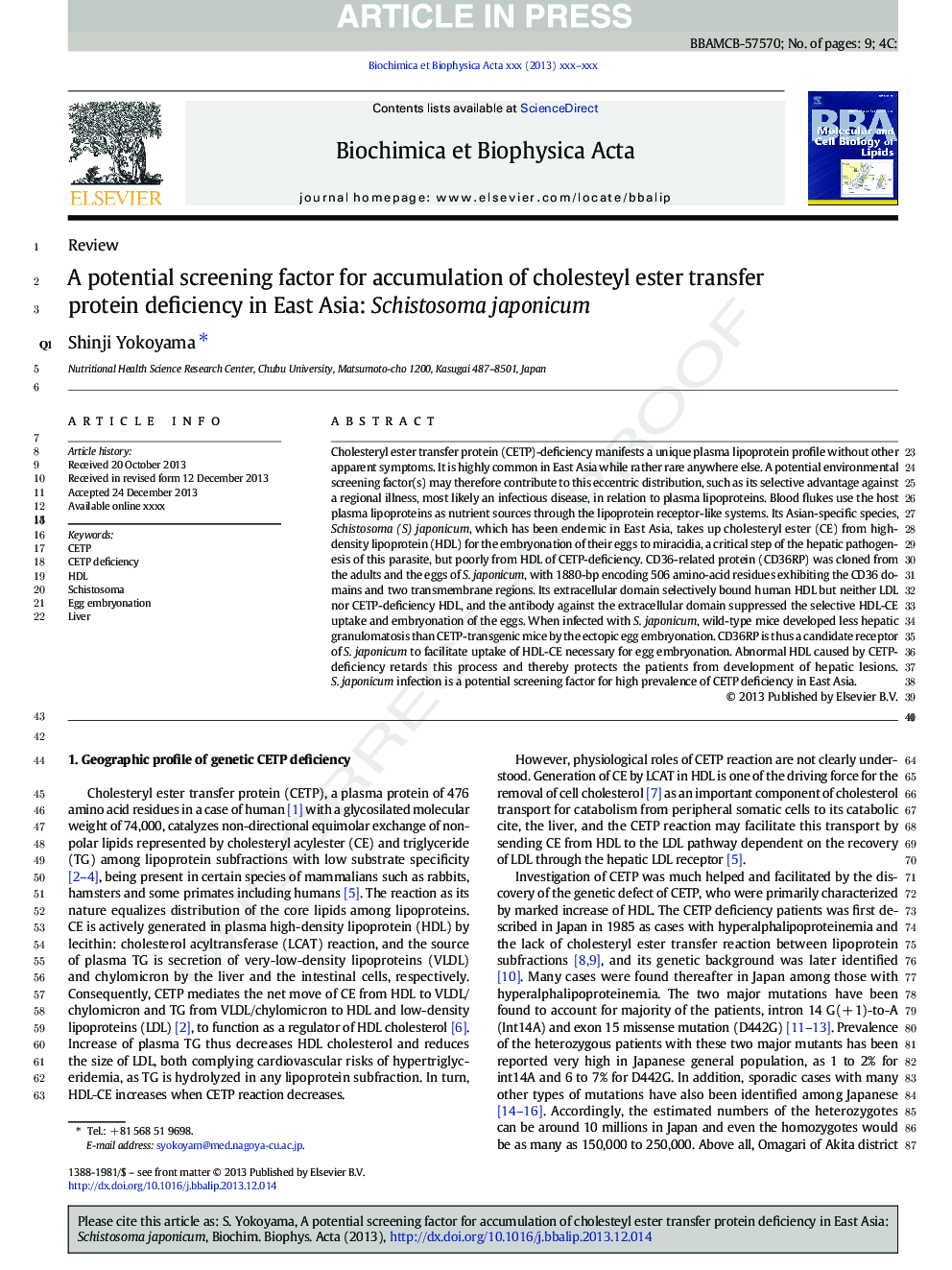| کد مقاله | کد نشریه | سال انتشار | مقاله انگلیسی | نسخه تمام متن |
|---|---|---|---|---|
| 8302371 | 1537731 | 2014 | 9 صفحه PDF | دانلود رایگان |
عنوان انگلیسی مقاله ISI
A potential screening factor for accumulation of cholesteyl ester transfer protein deficiency in East Asia: Schistosoma japonicum
دانلود مقاله + سفارش ترجمه
دانلود مقاله ISI انگلیسی
رایگان برای ایرانیان
موضوعات مرتبط
علوم زیستی و بیوفناوری
بیوشیمی، ژنتیک و زیست شناسی مولکولی
زیست شیمی
پیش نمایش صفحه اول مقاله

چکیده انگلیسی
Cholesteryl ester transfer protein (CETP)-deficiency manifests a unique plasma lipoprotein profile without other apparent symptoms. It is highly common in East Asia while rather rare anywhere else. A potential environmental screening factor(s) may therefore contribute to this eccentric distribution, such as its selective advantage against a regional illness, most likely an infectious disease, in relation to plasma lipoproteins. Blood flukes use the host plasma lipoproteins as nutrient sources through the lipoprotein receptor-like systems. Its Asian-specific species, Schistosoma (S) japonicum, which has been endemic in East Asia, takes up cholesteryl ester (CE) from high-density lipoprotein (HDL) for the embryonation of their eggs to miracidia, a critical step of the hepatic pathogenesis of this parasite, but poorly from HDL of CETP-deficiency. CD36-related protein (CD36RP) was cloned from the adults and the eggs of S. japonicum, with 1880-bp encoding 506 amino-acid residues exhibiting the CD36 domains and two transmembrane regions. Its extracellular domain selectively bound human HDL but neither LDL nor CETP-deficiency HDL, and the antibody against the extracellular domain suppressed the selective HDL-CE uptake and embryonation of the eggs. When infected with S. japonicum, wild-type mice developed less hepatic granulomatosis than CETP-transgenic mice by the ectopic egg embryonation. CD36RP is thus a candidate receptor of S. japonicum to facilitate uptake of HDL-CE necessary for egg embryonation. Abnormal HDL caused by CETP-deficiency retards this process and thereby protects the patients from development of hepatic lesions. S. japonicum infection is a potential screening factor for high prevalence of CETP deficiency in East Asia.
ناشر
Database: Elsevier - ScienceDirect (ساینس دایرکت)
Journal: Biochimica et Biophysica Acta (BBA) - Molecular and Cell Biology of Lipids - Volume 1841, Issue 4, April 2014, Pages 495-504
Journal: Biochimica et Biophysica Acta (BBA) - Molecular and Cell Biology of Lipids - Volume 1841, Issue 4, April 2014, Pages 495-504
نویسندگان
Shinji Yokoyama,